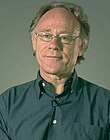
Back علم الآثار الزائف Arabic Pseudoarqueologia Catalan Pseudoarcheologie Czech Pseudoarkæologi Danish Ψευδοαρχαιολογία Greek Pseudoarqueología Spanish Pseudoarheoloogia Estonian Sasiarkeologia Basque Näennäisarkeologia Finnish Pseudoarchéologie French
Pseudoarchaeology (sometimes called fringe or alternative archaeology) consists of attempts to study, interpret, or teach about the subject-matter of archaeology while rejecting, ignoring, or misunderstanding the accepted data-gathering and analytical methods of the discipline.[1][2][3] These pseudoscientific interpretations involve the use of artifacts, sites or materials to construct scientifically insubstantial theories to strengthen the pseudoarchaeologists' claims. Methods include exaggeration of evidence, dramatic or romanticized conclusions, use of fallacious arguments, and fabrication of evidence.
There is no unified pseudoarchaeological theory or method, but rather many different interpretations of the past which are jointly at odds with those developed by the scientific community as well as with each other. These include religious philosophies such as creationism or "creation science" that apply to the archaeology of historic periods such as those that would have included the supposed worldwide flood myth, the Genesis flood narrative, Nephilim, Noah's Ark, and the Tower of Babel. Some pseudoarchaeological theories concern the idea that prehistoric and ancient human societies were aided in their development by intelligent extraterrestrial life, an idea propagated by those such as Italian author Peter Kolosimo, French authors Louis Pauwels and Jacques Bergier in The Morning of the Magicians (1963), and Swiss author Erich von Däniken in Chariots of the Gods? (1968). Others instead argue there were human societies in the ancient period which were significantly technologically advanced, such as Atlantis, and this idea has been propagated by some people such as Graham Hancock in his publication Fingerprints of the Gods (1995). Pseudoarchaeology has also been manifest in Mayanism and the 2012 phenomenon.
Many pseudoarchaeological theories are intimately linked with the occult/Western esoteric tradition.[4] Many alternative archaeologies have been adopted by religious groups. Fringe archaeological ideas such as archaeocryptography and pyramidology have been endorsed by religions ranging from the British Israelites to the theosophists. Other alternative archaeologies include those that have been adopted by members of New Age and contemporary pagan belief systems.
Academic archaeologists have often criticised pseudoarchaeology, with one of the major critics, John R. Cole, characterising it as relying on "sensationalism, misuse of logic and evidence, misunderstanding of scientific method, and internal contradictions in their arguments".[5] The relationship between alternative and academic archaeologies has been compared to the relationship between intelligent design theories and evolutionary biology by some archaeologists.[6]
- ^ Holtorf 2005. p. 544.
- ^ Fagan and Feder 2006. p. 720.
- ^ Williams 1987.
- ^ John Hoopes "The Mysterious Origins of Fringe" The SAA Archaeological Record NOVEMBER 2019 - Volume 19 Number 5
- ^ Cole 1980. p. 2.
- ^ Fagan and Feder 2006. p. 721.

